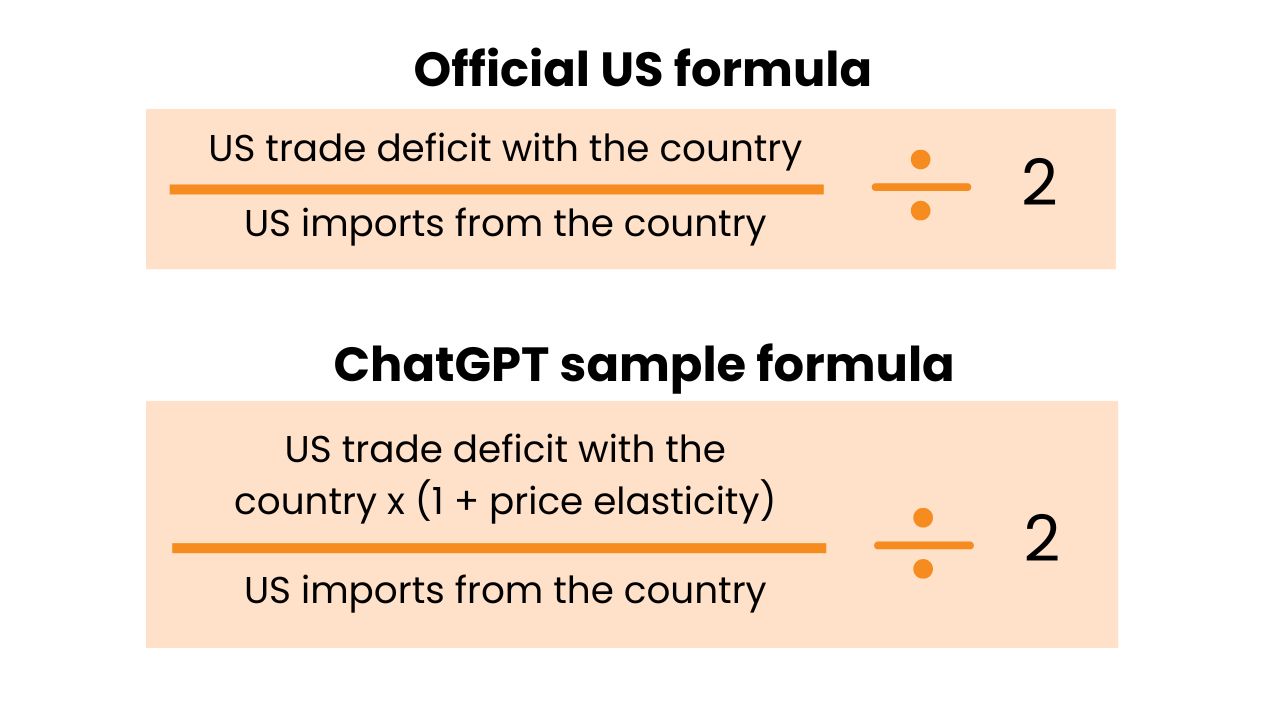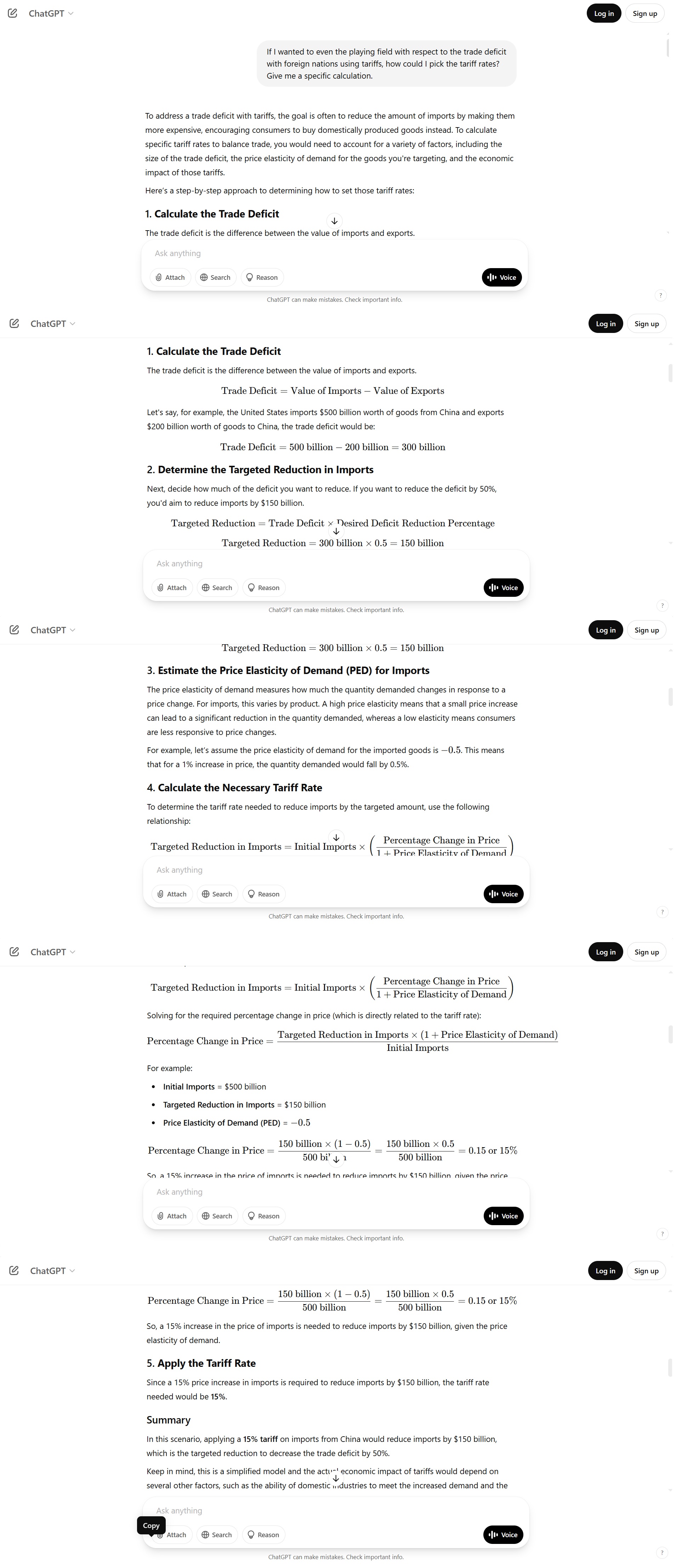
Were the new US tariffs calculated using ChatGPT output?
On Wednesday US time, the Trump government announced sudden sweeping tariffs on almost all its trading partners, including particularly massive tariffs on countries with which the US holds barely any absolute trade deficit.
The formula used to calculate some of these tariffs, subsequently revealed by the Office of the US Trade Representative, is an extremely simplistic one that involves dividing the US's trade deficit with a country by the value of US imports from that country and then, for an unexplained reason, dividing that number by two.
Shortly after the tariffs were announced, users on a Reddit news forum discovered that asking ChatGPT for a specific calculation on tariff rates to address trade deficits would produce this exact formula.
Within 12 hours, the ChatGPT response had been updated to reflect a slightly more sophisticated formula that factors in price elasticity of demand (how much buyers will react to a change in price). However, the new formula retained one number: a desired deficit reduction percentage of 50%, which translated into dividing by two.
That 50% was displayed in both the old and updated responses as an example of how to use the formulae.
The only difference between the official US formula and the ChatGPT formula is the inclusion of price elasticity.
 A compound screenshot at the bottom of this article shows the ChatGPT response to the Reddit-suggested prompt approximately 24 hours after the tariff announcement. Other variants of the prompt produced the same result.
A compound screenshot at the bottom of this article shows the ChatGPT response to the Reddit-suggested prompt approximately 24 hours after the tariff announcement. Other variants of the prompt produced the same result.
Although there is no way, bar another official announcement or a leak, to confirmably account for the similarity between the US formula and the ChatGPT output - especially the use of the 50% multiplier - this unusual convergence of official government policy and mass-use automation does draw attention back to growing concerns about whether users of generative AI are applying genuine human judgement and critical thinking to the tool's output, or whether they are simply copying and pasting whatever the model serves up to them.
We have asked recently: why pay a human if the AI can do it?
The answer, perhaps, is that there are some things humans absolutely should be paid for and some things that some humans absolutely should not be paid for.















